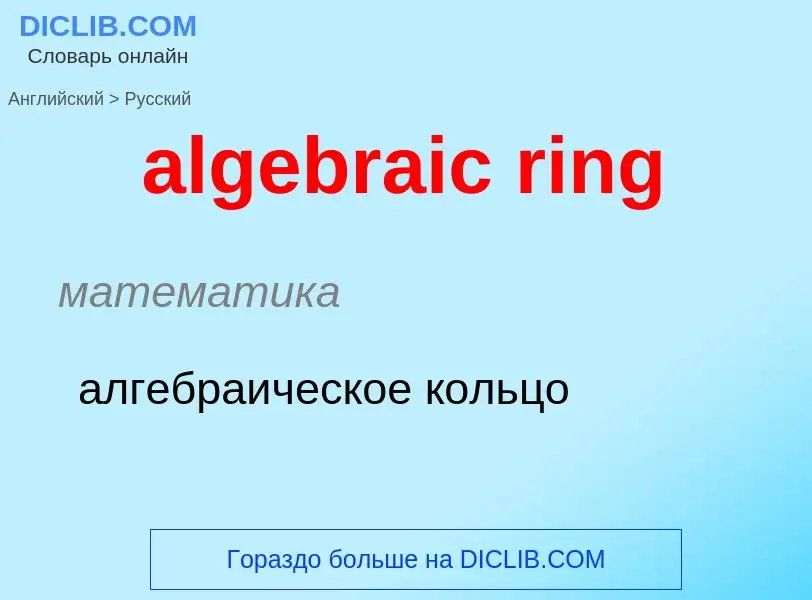Traducción y análisis de palabras por inteligencia artificial ChatGPT
En esta página puede obtener un análisis detallado de una palabra o frase, producido utilizando la mejor tecnología de inteligencia artificial hasta la fecha:
- cómo se usa la palabra
- frecuencia de uso
- se utiliza con más frecuencia en el habla oral o escrita
- opciones de traducción
- ejemplos de uso (varias frases con traducción)
- etimología
algebraic ring - traducción al ruso
математика
алгебраическое кольцо
математика
унитарная алгебра
Definición
Wikipedia
In mathematics, rings are algebraic structures that generalize fields: multiplication need not be commutative and multiplicative inverses need not exist. In other words, a ring is a set equipped with two binary operations satisfying properties analogous to those of addition and multiplication of integers. Ring elements may be numbers such as integers or complex numbers, but they may also be non-numerical objects such as polynomials, square matrices, functions, and power series.
Formally, a ring is an abelian group whose operation is called addition, with a second binary operation called multiplication that is associative, is distributive over the addition operation, and has a multiplicative identity element. (Some authors use the term "rng" with a missing "i" to refer to the more general structure that omits this last requirement; see § Notes on the definition.)
Whether a ring is commutative (that is, whether the order in which two elements are multiplied might change the result) has profound implications on its behavior. Commutative algebra, the theory of commutative rings, is a major branch of ring theory. Its development has been greatly influenced by problems and ideas of algebraic number theory and algebraic geometry. The simplest commutative rings are those that admit division by non-zero elements; such rings are called fields.
Examples of commutative rings include the set of integers with their standard addition and multiplication, the set of polynomials with their addition and multiplication, the coordinate ring of an affine algebraic variety, and the ring of integers of a number field. Examples of noncommutative rings include the ring of n × n real square matrices with n ≥ 2, group rings in representation theory, operator algebras in functional analysis, rings of differential operators, and cohomology rings in topology.
The conceptualization of rings spanned the 1870s to the 1920s, with key contributions by Dedekind, Hilbert, Fraenkel, and Noether. Rings were first formalized as a generalization of Dedekind domains that occur in number theory, and of polynomial rings and rings of invariants that occur in algebraic geometry and invariant theory. They later proved useful in other branches of mathematics such as geometry and analysis.

![[[Richard Dedekind]], one of the founders of [[ring theory]]. [[Richard Dedekind]], one of the founders of [[ring theory]].](https://commons.wikimedia.org/wiki/Special:FilePath/Dedekind.jpeg?width=200)
